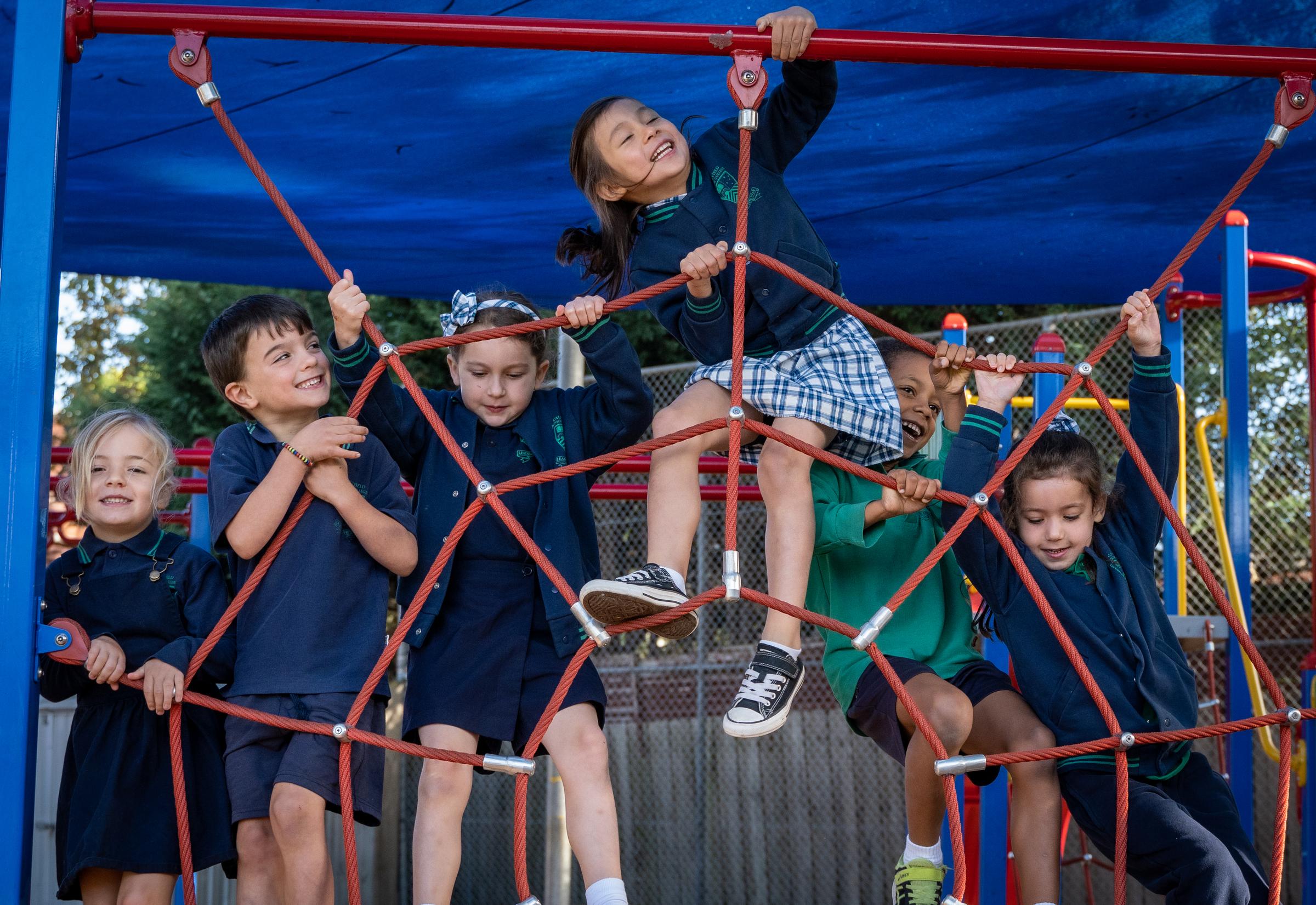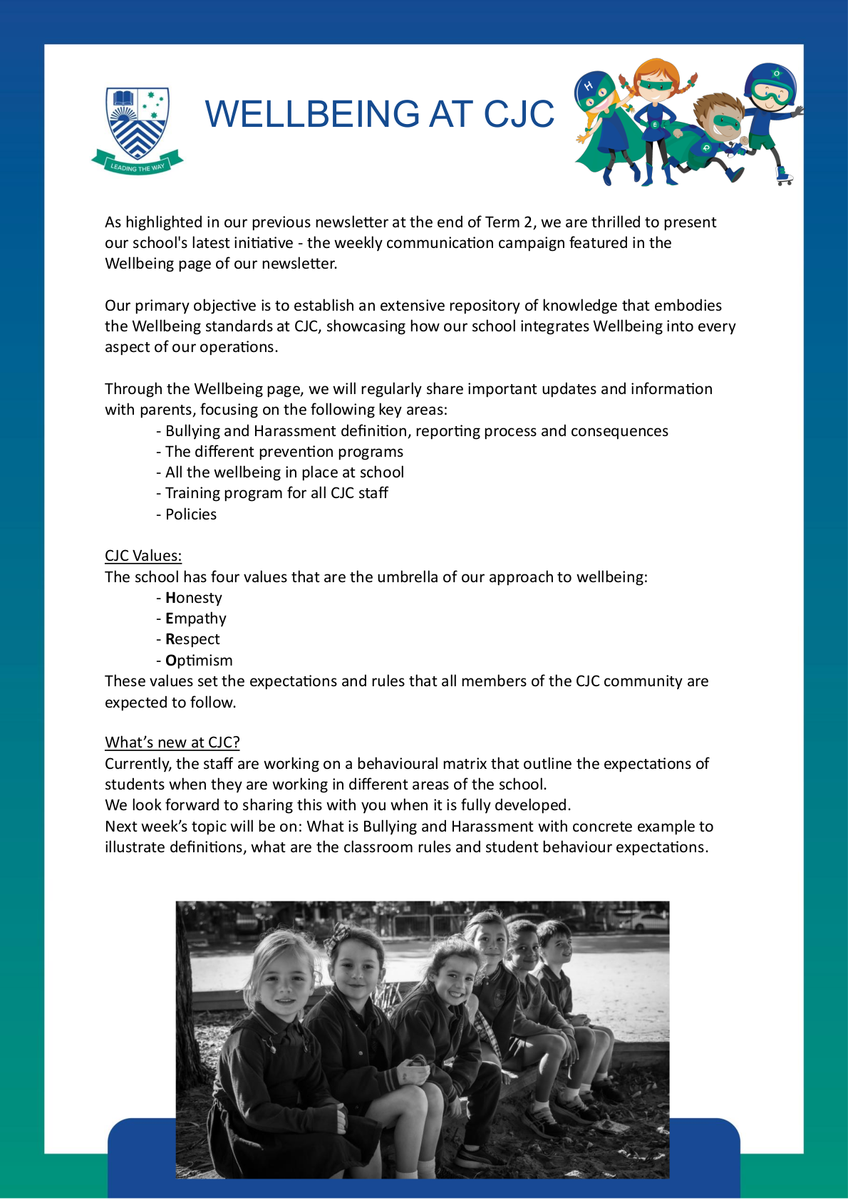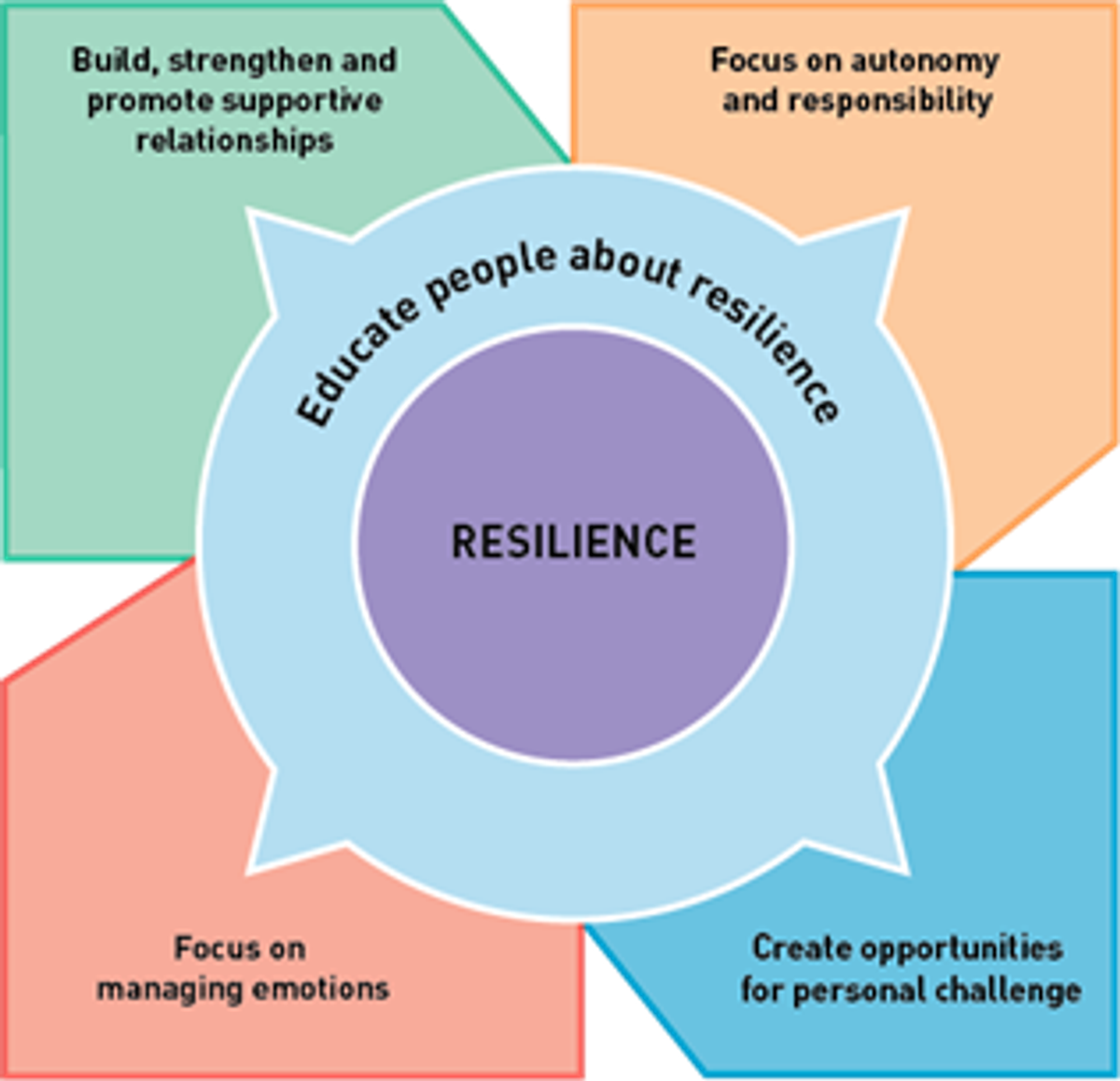Wellbeing news

Dear parents, carers and families,
As a school, we take the safety and wellbeing of our students seriously. To address some of the more serious behaviours that may occur during school hours, we have implemented a recess and lunch time ‘Reflection Room’.
The purpose of this room is to provide a space at recess and lunch that students must attend to reflect on their behaviour. The room is supervised by a member of our wellbeing team. Students will be expected to complete a reflection sheet, which is sent home with the student and their parent or carer must sign it. There are also other activities and scenarios that students will work through during this time to try to correct their behaviour.
We will also be setting up a new Compass notification that will alert you if your child has been sent to the reflection room and the reason for it. Some examples of behaviour where a student will be required to attend this room are:
- Bullying
- Physical Violence (hitting, kicking, tripping, pushing, pinching etc.)
- Verbal (insults, swearing, intimidation, racist remarks etc.)
- Cyberbullying
- Truancy (running away from teachers, leaving the classroom or school grounds without permission)
- Property Damage
- Theft
- Refusal to follow teacher instructions.
- Repeated behaviours of a more minor nature, three times in a week (play fighting, lying/cheating, being late to class, swinging in chairs, littering or low-level reversible damage etc.).
We appreciate our communities support regarding this new process. If you have any questions regarding it, please contact a member of leadership. If your child is sent to the room and you have questions or are confused as to why they were sent there, please enquire with your child’s teacher.
Thank you,
CJC Leadership
Feeling safe, connected and secure
Research tells us that young people who feel safe, connected, and secure and have loving and trusting relationships are more likely to be active participants in their learning and to achieve better physical, emotional, social, and educational outcomes.
Schools are positive places of learning where everyone has a right to a safe and healthy learning environment.
The safety and Wellbeing of our students at Caulfield Junior College is always our number one priority and we have many systems and processes in place to ensure this.
As we know, a strong partnership with parents/carers is paramount to the overall wellbeing of all children.
Resilience
This week we are going to be talking about resilience.
When we talk about resilience, we’re talking about a child’s ability to cope with ups and downs, and bounce back from the challenges they experience during childhood – for example moving home, changing schools, studying for an exam or dealing with the death of a loved one. Building resilience helps children not only to deal with current difficulties that are a part of everyday life, but also to develop the basic skills and habits that will help them deal with challenges later in life, during adolescence and adulthood.
Resilience is important for children’s mental health. Children with greater resilience are better able to manage stress, which is a common response to difficult events. Stress is a risk factor for mental health conditions such as anxiety and depression, if the level of stress is severe or ongoing.
One way of explaining the concept of resilience is to imagine a plane encountering turbulence mid-flight. The turbulence, or poor weather, represents adversity. Different planes will respond to poor weather conditions in different ways, in the same way different children respond to the same adversity in different ways.
Research has shown that there are five areas that offer the best chance for building resilience in children.
Resource
This website provides some more really insightful information about helping to build your child’s resilience.


